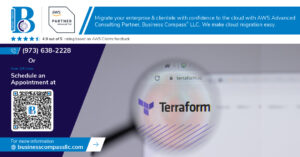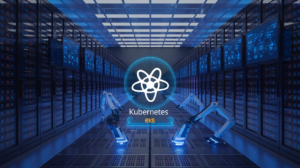Are you tired of struggling with outdated database technologies? 🤔 In today’s fast-paced digital world, staying ahead of the curve is crucial for businesses and developers alike. Amazon Web Services (AWS) has been at the forefront of database innovation, constantly pushing the boundaries of what’s possible in data management and storage.
From relational databases to NoSQL solutions, data warehousing to in-memory caching, AWS offers a comprehensive suite of database services that are revolutionizing the way we handle data. But with so many options available, it can be overwhelming to keep up with the latest features and improvements. That’s why we’re here to help you navigate through the exciting world of AWS database services!
In this blog post, we’ll dive deep into the newest and most innovative features of five key AWS database offerings: Amazon RDS, DynamoDB, Aurora, Redshift, and ElastiCache. We’ll explore how these advancements can enhance your database management, boost performance, and streamline your operations. So, buckle up and get ready to discover how these cutting-edge features can take your data game to the next level! 💪🚀
Amazon RDS: Enhancing Relational Database Management
Automated backups and point-in-time recovery
Amazon RDS offers robust automated backup and point-in-time recovery features, ensuring data protection and business continuity. These features provide:
- Daily automated backups
- Customizable backup windows
- Retention periods up to 35 days
- Point-in-time recovery to any second within the retention period
| Feature | Benefit |
|---|---|
| Automated Backups | Eliminates manual processes, reducing operational overhead |
| Customizable Windows | Allows scheduling during low-traffic periods |
| Extended Retention | Provides flexibility for long-term data recovery needs |
| Point-in-Time Recovery | Enables precise restoration, minimizing data loss |
Multi-AZ deployments for high availability
RDS’s Multi-AZ deployments enhance database reliability by:
- Automatically replicating data to a standby instance in a different Availability Zone
- Providing automatic failover in case of infrastructure failures
- Ensuring minimal downtime during maintenance or upgrades
Read replicas for improved performance
Read replicas offer significant performance benefits:
- Offload read traffic from the primary database
- Support up to 15 read replicas per database instance
- Allow cross-region replication for global applications
- Enable easy scaling of read capacity
Support for multiple database engines
RDS supports a variety of popular database engines, offering flexibility and choice:
- MySQL
- PostgreSQL
- MariaDB
- Oracle
- SQL Server
This multi-engine support allows organizations to leverage existing skills and tools while benefiting from RDS’s managed services. Now that we’ve explored RDS’s key features, let’s dive into the innovations in NoSQL databases with DynamoDB.
DynamoDB: Innovations in NoSQL Databases
A. On-demand capacity mode for flexible scaling
DynamoDB’s on-demand capacity mode offers unparalleled flexibility for scaling your NoSQL database. This feature automatically adjusts to your application’s traffic patterns, ensuring optimal performance without manual intervention.
Key benefits of on-demand capacity mode:
- Automatic scaling
- Pay-per-request pricing
- No capacity planning required
- Ideal for unpredictable workloads
B. Global tables for multi-region replication
Global tables enable seamless multi-region replication, providing low-latency access to data across different geographical locations. This feature enhances availability and disaster recovery capabilities.
| Feature | Benefit |
|---|---|
| Multi-region replication | Improved data availability |
| Automatic conflict resolution | Ensures data consistency |
| Low-latency access | Enhanced user experience |
C. Transactions for complex data operations
DynamoDB now supports ACID transactions, allowing for complex data operations across multiple items and tables. This feature ensures data integrity and consistency in applications requiring atomic operations.
D. DynamoDB Streams for real-time data processing
DynamoDB Streams enables real-time data processing by capturing table activity and triggering downstream actions. This feature is crucial for building event-driven architectures and maintaining data synchronization across systems.
E. DAX (DynamoDB Accelerator) for improved read performance
DAX significantly enhances read performance by providing in-memory caching for DynamoDB tables. This fully managed service reduces response times from milliseconds to microseconds, making it ideal for read-heavy workloads.
Now that we’ve explored DynamoDB’s innovations, let’s move on to Aurora, Amazon’s next-generation relational database offering.
Aurora: Next-Generation Relational Database
Serverless option for automatic scaling
Aurora Serverless offers a game-changing approach to database management, automatically scaling compute and memory resources based on application demand. This feature eliminates the need for manual capacity planning and management, allowing developers to focus on application development rather than infrastructure concerns.
| Feature | Benefit |
|---|---|
| Auto-scaling | Adjusts capacity in seconds |
| Pay-per-use | Cost-effective for variable workloads |
| Automatic pausing | Saves costs during idle periods |
Multi-master capabilities for write scaling
Aurora’s multi-master feature enables horizontal scaling of write operations, significantly improving performance for write-heavy applications. This capability allows multiple database instances to accept write operations simultaneously, distributing the load and enhancing fault tolerance.
- Increased write throughput
- Improved application availability
- Seamless failover between instances
Global database for low-latency global reads
Aurora Global Database extends the reach of your applications worldwide, providing low-latency reads across multiple regions. This feature replicates data with minimal impact on the primary database, ensuring consistent performance for global users.
Machine learning integration with SageMaker
By integrating with Amazon SageMaker, Aurora brings machine learning capabilities directly to your database. This powerful combination allows for real-time predictions and analytics within your database queries, opening up new possibilities for data-driven decision making.
Now that we’ve explored Aurora’s cutting-edge features, let’s examine how Redshift is advancing data warehousing solutions.
Redshift: Advancements in Data Warehousing
Redshift Spectrum for querying exabytes of unstructured data
Redshift Spectrum revolutionizes data warehousing by enabling queries on vast amounts of unstructured data stored in Amazon S3. This feature allows you to seamlessly analyze data across your Redshift cluster and S3 data lake without the need for data loading or ETL processes.
Key benefits of Redshift Spectrum:
- Scalability: Query exabytes of data without moving it
- Cost-effectiveness: Pay only for the queries you run
- Performance: Leverage Redshift’s MPP engine for fast queries
- Flexibility: Support for various file formats (Parquet, ORC, JSON, etc.)
Concurrency scaling for consistent query performance
Concurrency scaling automatically adds cluster capacity to handle increases in concurrent queries. This feature ensures consistent performance even during peak usage periods.
| Without Concurrency Scaling | With Concurrency Scaling |
|---|---|
| Performance degrades during high concurrency | Maintains consistent query performance |
| Limited number of concurrent queries | Supports virtually unlimited concurrent queries |
| Manual capacity planning required | Automatic scaling based on demand |
Automated table optimization for query speed
Redshift’s automated table optimization feature uses machine learning to enhance query performance without manual intervention. It continuously analyzes your workload and applies optimizations such as:
- Automatic distribution key selection
- Sort key management
- Compression encoding adjustments
These optimizations lead to significant improvements in query speed and overall cluster efficiency.
Federated query to combine data across databases
Federated query enables you to analyze data across Redshift, RDS PostgreSQL, and Aurora PostgreSQL databases in a single query. This powerful feature allows for:
- Seamless data integration
- Real-time analytics on operational data
- Reduced data movement and associated costs
By leveraging these advanced features, Redshift continues to push the boundaries of data warehousing capabilities, offering unparalleled performance, scalability, and flexibility for modern analytics workloads.
ElastiCache: Boosting In-Memory Data Store Performance
Auto discovery for simplified cluster management
ElastiCache’s auto discovery feature simplifies cluster management by automatically detecting and connecting to cache nodes. This innovative approach eliminates the need for manual configuration updates when adding or removing nodes, streamlining operations and reducing administrative overhead.
Key benefits of auto discovery include:
- Automatic node detection
- Seamless scaling
- Reduced configuration complexity
- Improved fault tolerance
Online cluster resizing for seamless scaling
ElastiCache now supports online cluster resizing, allowing you to scale your cache infrastructure without downtime. This feature enables you to adapt to changing workload demands quickly and efficiently.
| Scaling Operation | Impact on Performance | Downtime Required |
|---|---|---|
| Scale Out | Minimal | None |
| Scale In | Negligible | None |
| Vertical Scaling | Brief performance dip | Minimal |
Encryption at-rest and in-transit for enhanced security
ElastiCache has bolstered its security features with encryption at-rest and in-transit. These enhancements ensure that your sensitive data remains protected throughout its lifecycle.
- At-rest encryption: Secures data stored in the cache
- In-transit encryption: Protects data as it moves between the cache and applications
Global datastore for cross-region replication
The global datastore feature enables cross-region replication, providing low-latency reads and disaster recovery capabilities. This functionality is particularly beneficial for applications with a global user base or stringent availability requirements.
Benefits of global datastore:
- Improved read performance for geographically distributed users
- Enhanced disaster recovery and business continuity
- Simplified management of multi-region deployments
With these advanced features, ElastiCache continues to evolve, offering improved performance, scalability, and security for in-memory data store operations. Next, we’ll summarize the key takeaways from our exploration of new features across various AWS database services.
The latest features in Amazon’s database services offer significant improvements in performance, scalability, and ease of use. RDS now provides enhanced management capabilities for relational databases, while DynamoDB brings innovative solutions to NoSQL data storage. Aurora continues to push the boundaries of relational database technology, and Redshift introduces advanced data warehousing capabilities. ElastiCache rounds out the offerings with improved in-memory data store performance.
As businesses continue to rely heavily on data-driven decision-making, leveraging these cutting-edge database technologies becomes crucial. By exploring and implementing these new features, organizations can optimize their data management strategies, improve application performance, and ultimately drive better business outcomes. Stay informed about these evolving database technologies to ensure your infrastructure remains competitive and efficient in today’s fast-paced digital landscape.



















